Are you tired of reading articles about strengthening your site security? Do you think that it’s redundant to learn new tips and tools for locking down your site? Do you believe that security plugins are useless?
It’s common to ignore site security. Lots of webmasters do it. But just because many people follow a path doesn’t mean that it’s the right direction. The biggest issue is that most webmasters skim through a few security articles, but only a few of them apply what they learn.
There is a huge difference between knowledge and practice. Indeed, securing a site isn’t accessible to everyone, but the average WordPress user can do a lot to secure a site.
Someone once said that there is a plugin for everything, and that person was right. Check the WordPress repository for security plugins, and you will find dozens of fantastic plugins. There are also a few premium plugins that will make a hacker’s life hell.
Chose a plugin to lock down your site from these suggestions.
Jetpack
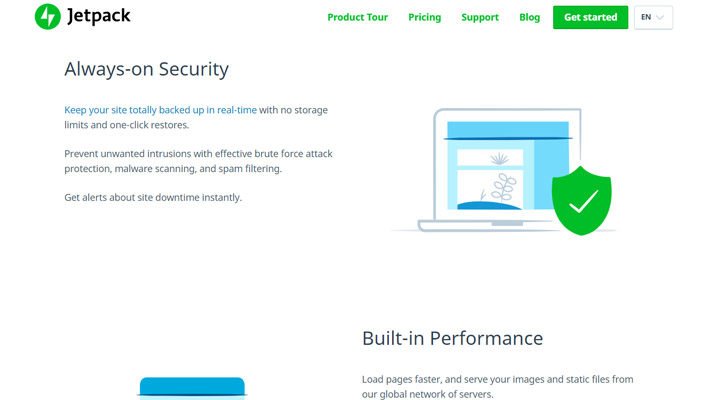
Jetpack is a jack of all trades, but it’s a notable exception. It genuinely does the work of many other plugins. Jetpack is comprised of modules for security, performance, stats, design, and site activity. The security module prevents brute-force attacks, blocks malicious login attempts, enables two-factor authentication, and monitors the site availability.
Sadly, this module can’t replace a top-class security plugin. Most likely, you’ll have to install and activate another security plugin to complement Jetpack’s security module.
One of the biggest issues with security plugins is the heavy consumption of resources. As a result, the site loads slowly. A combo of Jetpack and a lightweight security plugin will have a lighter impact on the site’s loading speed. Use this duo to make your site faster.
Wordfence
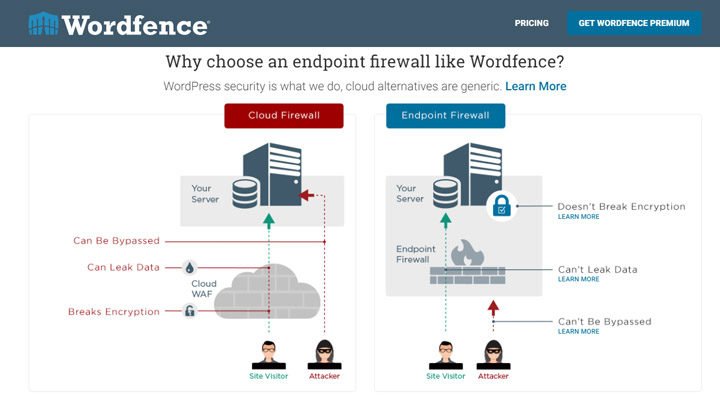
Wordfence is the most downloaded security plugins from the WordPress repository, excluding Jetpack, which I consider an all-in-one plugin. Wordfence has over three million installs and a rating of 4.8 out of five stars; these stats should be enough to convince you of Wordfence’s potential.
Wordfence comes in two versions: free (available on the WordPress repository) and premium. The free version is more than enough for a large variety of site purposes. Only a handful of free plugins include as many features as the Wordfence free version.
Once you install and activate Wordfence, a proactive firewall will protect your site. Next, a malware scanner will check the WordPress files for malware and malicious code. It will replace WordPress files that may have malware infections with new files from WordPress.org. Webmasters can configure notifications via email or SMS for various situations, such as powerful brute force attacks or site downtime.
Consider purchasing a premium license if your site generates serious income or you need an extra layer of security. The premium version includes real-time IP blacklist, country blocking, an updated malware database, and priority support.
All In One WP Security & Firewall
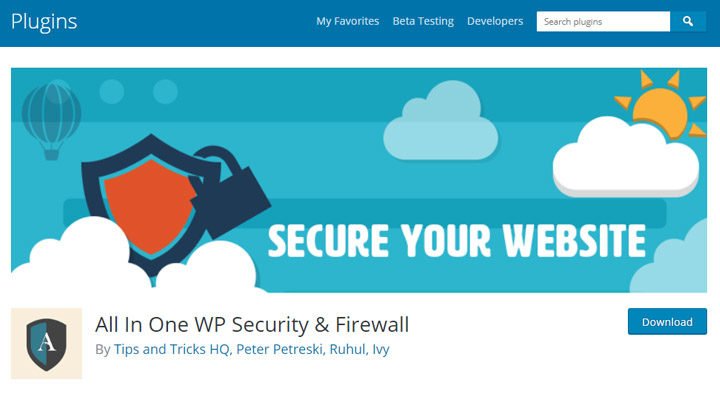
This plugin has the same excellent rating as Wordfence, but it’s less frequently installed. All In One WP Security & Firewall should be on your radar—the only flaw in the plugin is its lengthy name!
The plugin has a lot of effective tools to fight against malware and hacker attacks, but the plugin differentiates itself from competitors with a unique feature: a security strength meter. It rates your site’s security level. In this way, the users have a better idea of the current state of their site security and are encouraged to make their sites more secure.
iThemes Security
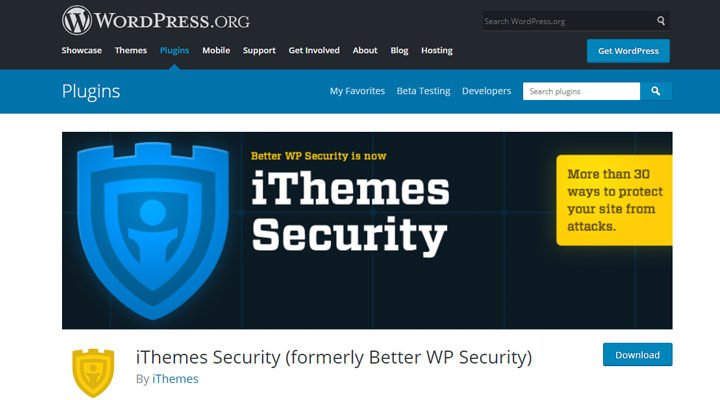
iThemes Security is another widely used and highly appreciated security plugin. The same as Wordfence, this plugin has both a free and a paid version. iThemes Security protects your site against brute force attacks and bots, sets up a powerful firewall, enforces the use of strong passwords, hides login and admin web pages, and creates copies of the site database.
Another cool feature of iThemes Security is Away Mode, which makes the site inaccessible. It’s useful when you won’t have access to your site for a long time.
The premium version contains more than 30 ways to strengthen your site security, including password-less login, two-factor authentication, password expiration, WP-CLI integration, and a dashboard widget.
Sucuri Security
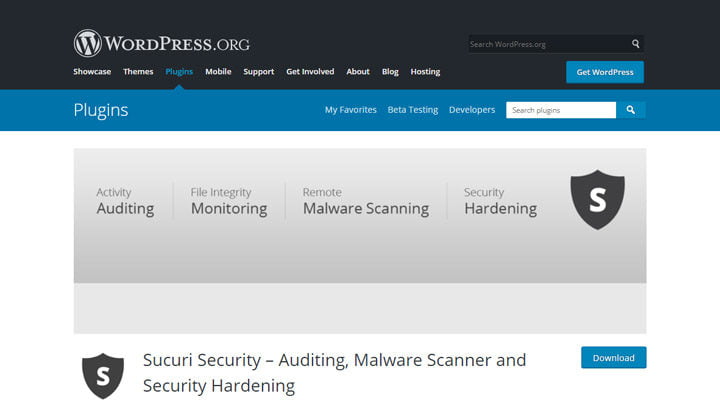
Sucuri Inc is a global brand in the site security industry, and its WordPress plugin is a top-class product. It does a complete security audit, checks file integrity, and removes malware. The same as the other security plugins, you can get notified in some dangerous instances.
Defender

Defender is a newcomer in the WordPress security field. WPMU Dev developed the plugin, and the premium version is part of its suite of tools for WordPress webmasters. The free version is available on the WordPress repository, and surprisingly, it’s jam-packed with countless features.
Defender does pretty much the same thing as Wordfence or iThemes Security, but it gets a higher mark for its modern interface. Less-trained WordPress users will highly appreciate the user-friendly interface.
How to Secure Your Site in Ten Minutes
These six security plugins are strong helpers for strengthening site security. But despite their proactive features, you can’t rest on your laurels. Use any of the above plugins but try to apply as many of the suggestions below as possible. It won’t take you more than ten minutes to implement these tips on your sites.
- Update everything. The WordPress core, your theme, and your plugins are constantly updated. Each new update usually comes with security improvements.
- Delete unused themes and plugins. Each plugin and theme is a potential vulnerability from a security perspective. Why not delete everything you’re not using?
- Audit the site host. There is no such thing as a free lunch, so don’t ever opt for free or extremely cheap hosts. Transfer your site to a trustworthy host.
- Audit the accounts. Have some accounts gone unused for a few months? Disable or even delete them because each account is a vulnerability.
- Use a strong password. Size matters when it comes to passwords. Check out this cool calculator released by Better Buys. You probably have no idea about how important an additional character is when someone is trying to crack a password.
Conclusion
Site security might be boring, but it’s mandatory to keep an eye on your site. A site won’t ever be 100% secure, but unless you run a top-secret agency, you don’t need perfection. Your strong commitment, a quality plugin that is properly configured, and a few proactive measures are usually enough to keep a site secure.
Do you have a different perspective? Please let us know your opinion by leaving a comment.
Leave a Reply